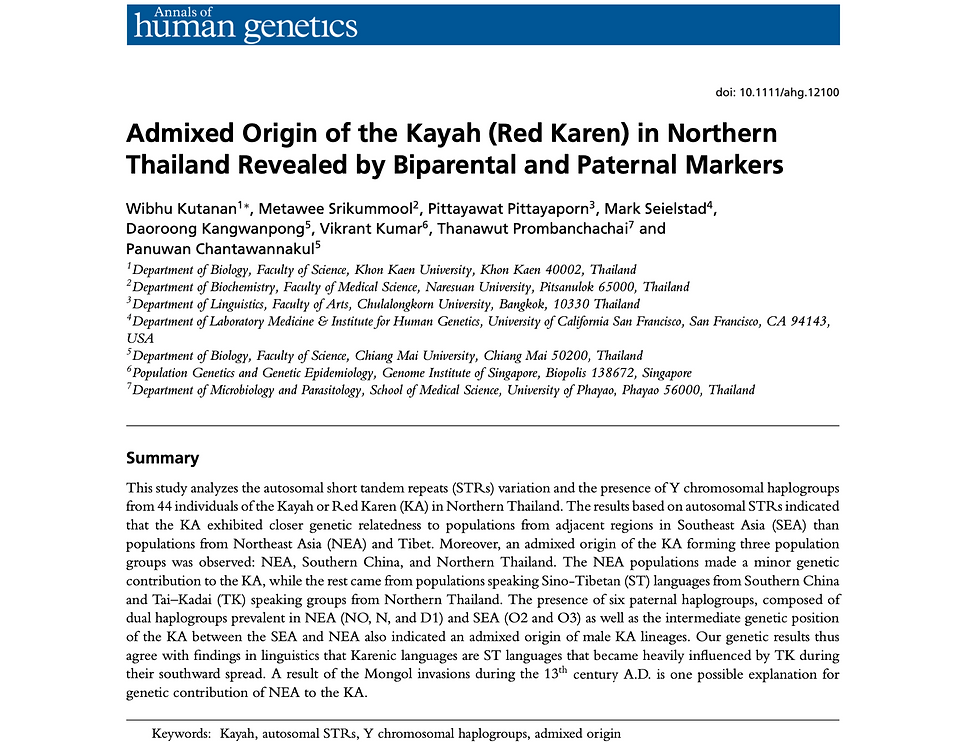Admixed Origin of the Kayah (Red Karen) in Northern Thailand Revealed by Biparental and Paternal Markers
- Nonglak Prakhun
- 23 ธ.ค. 2566
- ยาว 1 นาที
Wibhu Kutanan*, Metawee Srikummool, Pittayawat Pittayaporn, Mark Seielstad, Daoroong Kangwanpong, Vikrant Kumar, Thanawut Prombanchachai and Panuwan Chantawannakul
บทคัดย่อ
This study analyzes the autosomal short tandem repeats (STRs) variation and the presence of Y chromosomal haplogroups from 44 individuals of the Kayah or Red Karen (KA) in Northern Thailand. The results based on autosomal STRs indicated that the KA exhibited closer genetic relatedness to populations from adjacent regions in Southeast Asia (SEA) than populations from Northeast Asia (NEA) and Tibet. Moreover, an admixed origin of the KA forming three population groups was observed: NEA, Southern China, and Northern Thailand. The NEA populations made a minor genetic contribution to the KA, while the rest came from populations speaking Sino-Tibetan (ST) languages from Southern China and Tai-Kadai (TK) speaking groups from Northern Thailand. The presence of six paternal haplogroups, composed of dual haplogroups prevalent in NEA (NO, N, and D1) and SEA (O2 and O3) as well as the intermediate genetic position of the KA between the SEA and NEA also indicated an admixed origin of male KA lineages. Our genetic results thus agree with findings in linguistics that Karenic languages are ST languages that became heavily influenced by TK during their southward spread. A result of the Mongol invasions during the 13th century A.D. is one possible explanation for genetic contribution of NEA to the KA.

อ่านบทความฉบับเต็ม



Comments